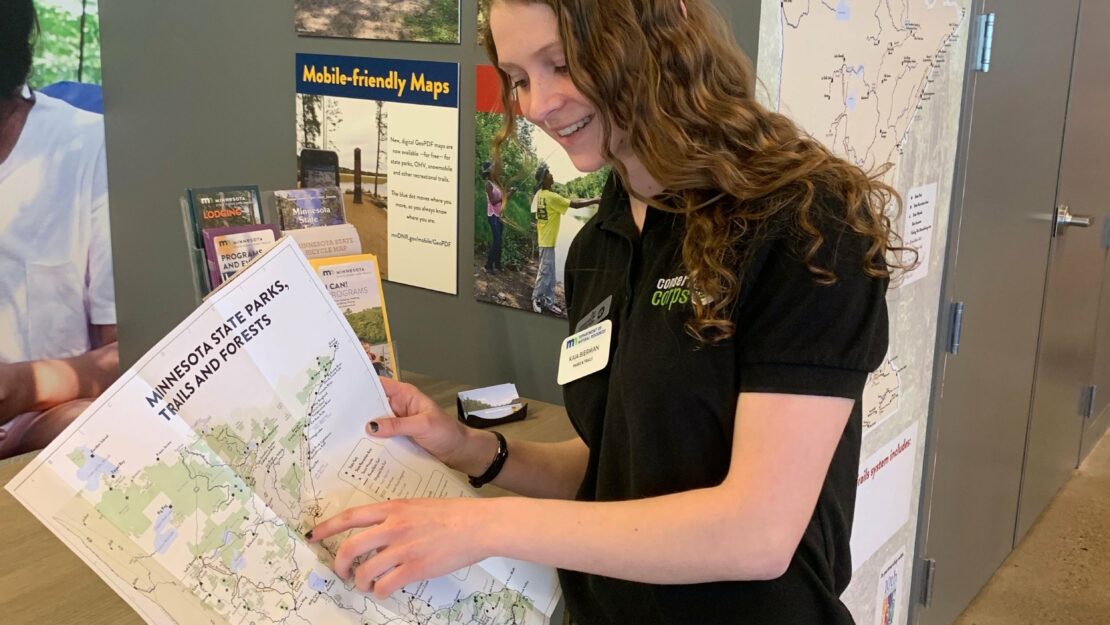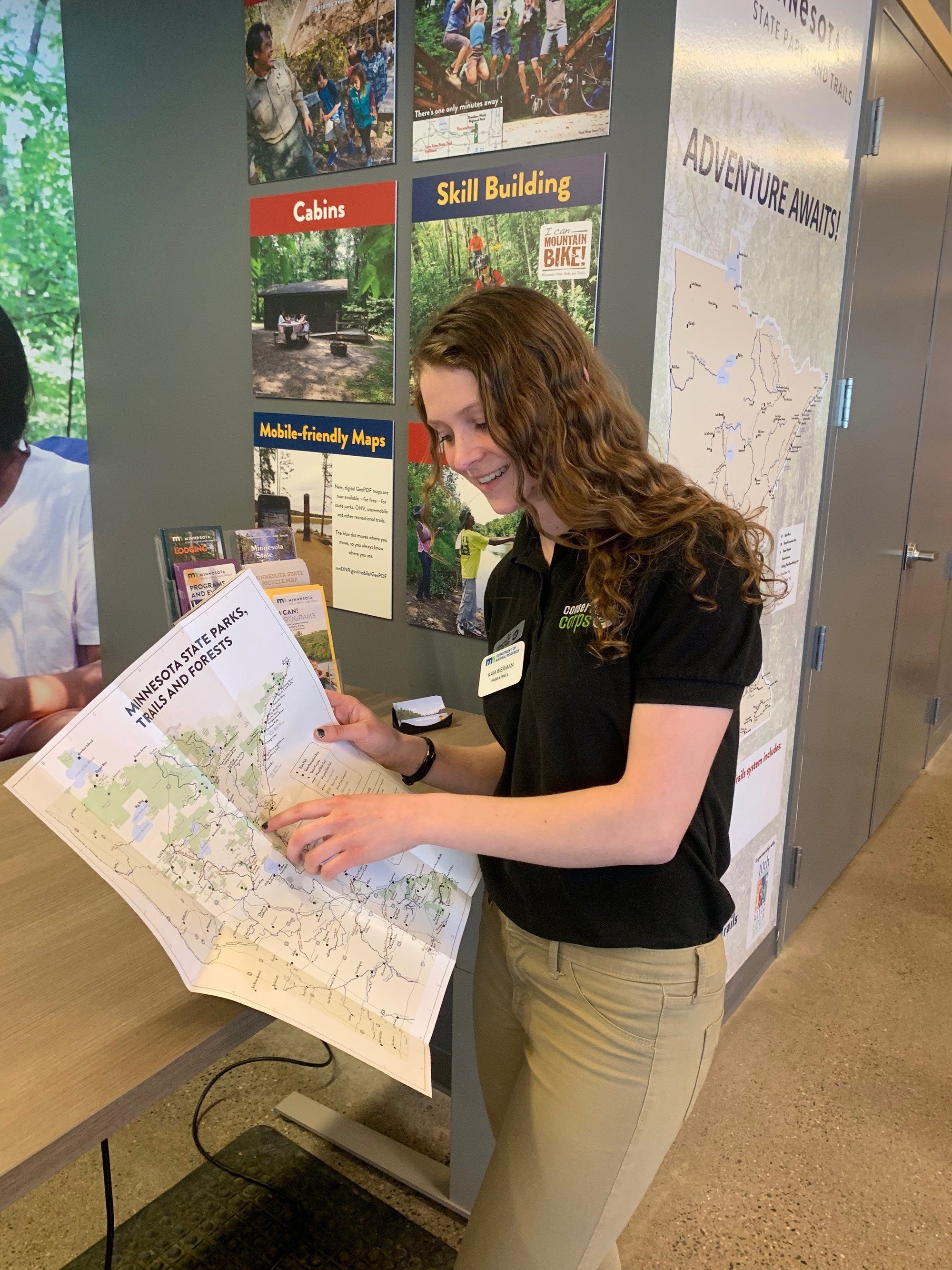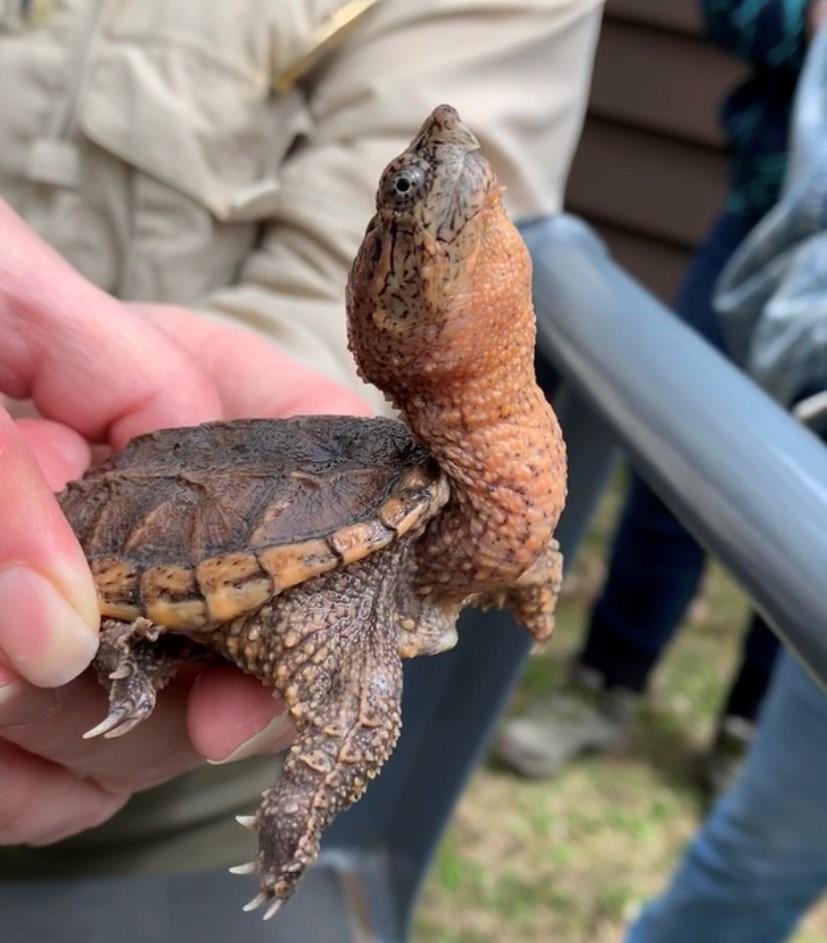An interpretive approach to outreach

By Kaia Bierman, urban outreach specialist/ AmeriCorps member with MN DNR Parks and Trails through Conservation Corps’ Individual Placement program

Kaia at the Trailhead
The Urban Outreach Specialist position is just in its second year of existence. Because it is still so new, trailblazing program development and implementation is a crucial component of my service term. I find myself constantly thinking: What impact am I making that sets the precedent for this position?
My specialty of outreach is making known the many benefits and amenities that Minnesota State Parks and Trails have to offer, which has given people more than enough inspiration to seek it out for themselves. Yet some are naturally inclined to give a person at a kiosk a wide berth, which means there are people we aren’t reaching. We won’t connect with every audience in the same way, which is why I am eager to integrate interpretive strategies into my outreach efforts.
In May I joined the DNR Naturalist Corps interns for the 2019 Spring Interpretive training in order to expand the ways I perform outreach. The content included the techniques Interpretive Naturalists use to facilitate connection between the meaning of resources and the individual’s interests. The DNR Interpretive Naturalist programs are crafted to point out the extraordinary features of the natural world while engaging their audience in creative and thought-provoking ways. Spouting out facts about natural resources generally doesn’t resonate with most people. How much you know doesn’t always translate to how much you care about conservation efforts. Interpretation is a mission-based communication process that provokes thought, interest, and action. There are many different approaches to take.

Baby Snapping Turtle from a Naturalist Program at the Interpretive Training
The Interpretive Naturalist for Gooseberry State Park, Carolyn Rock, has a program called Trouble for Turtles. As you hike along the Lower River View Trail, Carolyn describes the dangers that turtles face, from the predation pressures of an egg to traffic crossings as an adult, and how you can help protect them against these threats in simple ways. By learning about the struggles that the turtle population is facing in Minnesota, people can start to recognize the importance and need for intentional conservation efforts.
At Tettegouche State Park, Interpretive Naturalist Kurt Mead leads the program, “Antlers, and the Animals that Wear Them” which dives into moose ecology. However, each program is not identical. Kurt begins the program passing around a variety moose, deer, and elk antlers. You notice the different feel and weight, and he describes the purpose they serve to fit each animal’s behaviors. He may adjust the direction of the program if there is a large amount of questions surrounding deer, or some other topic. This speaks to the importance of knowing your audience in order to best connect with them, which requires listening.
I have noticed that outreach feels most fulfilling when there is an interactive component. While I am not a Naturalist, utilizing these interpretive approaches has contributed to expanding my reach. Not just with more numbers, but how it connects to people on an intellectual or emotional level.
At the Trailhead in Theodore Wirth Regional Park, I am attempting new ways to draw people in, with plant identification kits, animal track activities, and animal scat molds. I have been displaying these different items, and observing how people interact with them, the conversations and comments that come out of their presence, and noting where I can improve my own knowledge and talking points, and how to connect these conversations back to public lands.
Seeing what works and what doesn’t work has been helping me think about different ways to innovate and grow this program. I am very excited to continue to pilot my “Poop and Paws” hook. What is that? A secret, for now. You’ll just have to stay tuned to hear more about that!

Moose Skull from Antlers, and the Animals that Wear Them program at Tettegouche State Park